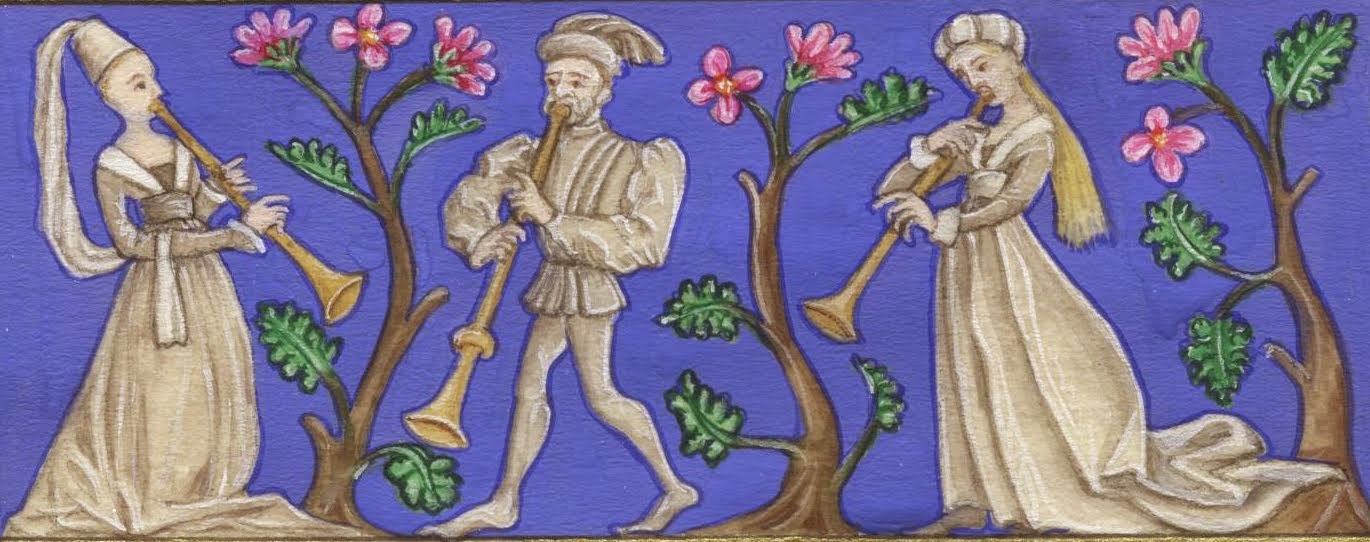In an
earlier post I mentioned the common assumption that, as medieval instrumental music was primarily an oral tradition, and little written notation survives, therefore most of the repertoire and performance style is simply unknown. In that post, I was moderately optimistic that we might still be able to make educated guesses to get somewhere close. However, at other times I am not so sure.
In particular I have been thinking about comparable situations where an oral musical tradition exists; has then been notated using a convention not invented for this style; and then others have 'learnt' the music from the notation without having heard the original.
Specifically I am thinking of Bulgarian music, which is quite popular for UK folk musicians to dabble in, probably because of the interesting rhythms which present an interesting challenge (and a welcome relief from dum-de-dum). But many of them seem to learn it from the page without (noticeable) effort to listen to or imitate original recordings. And if you are familiar with the original, it is clear that these 'reconstructions' are often missing all essentials of the style, so much so that it is obviously not 'Bulgarian'. For example, a Bulgarian '7/8' is not just '7/8', and it makes all the difference to the flow of the tune. Also, despite heroic efforts by some annotators, the ornamentation really cannot be captured, but is again key to an authentic sound. The problem can be increased if the music is also being played on different instruments: fiddle instead of gadulka, tin whistle instead of kaval, etc. In addition to different timbres, these will naturally lend themselves to different ways of ornamenting.
Of course, as with medieval music, it might not be a particular concern of current musicians to be authentic, and they just want to use the tune for their own musical purposes. But my point here is that it is only because we can listen to the original that we know how far the performance has deviated. Barring the invention of a time machine, we can never know for the middle ages. Maybe there is an essential lilt to the first or second rhythmic mode that we are totally missing. Maybe there was a form of ornament (similar to the constant 'vibrato', which is not exactly that and comes in several varieties, in Bulgarian music) that was absolutely ubiquitous and obvious to the medieval instrumentalist, and the absence of which in our attempted authentic performances would have them shaking their heads.
I guess this is not going to stop us playing. At least one lesson we might take is that using instruments that are as close to correct as possible might avoid some pitfalls. But we are still very probably getting it wrong...
